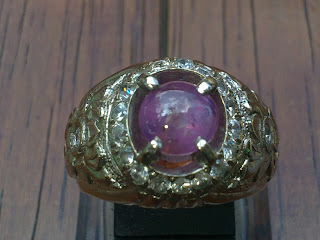What is actually a gemstone?
>> Saturday, June 9, 2012
 |
| Natural Pink Sapphire |
Most of the time, a gemstone can be described as minerals that is definitely beautiful, rare, and sturdy, means proofed against abrasion, fracturing and chemical reactions. Some minerals can be be extremely beautiful, nevertheless they could possibly be very soft and will eventually scratch easily, for example the fluorite. Fluorite is exceedingly colorful and pretty but is known for a hardness of only 4 within the Moh's hardness scale and possesses four perfect cleavage directions, that makes the item only an oddity as being a cut gem. Others are too common and are generally given a semi-precious status, for instance agate. Most gemstones have good hardness above 5, including a high refractive index , the better the index of refraction the better the shiny. All gemstones get some characteristics lacking perfection, including the seemingly perfect Diamond. Remember that the most wide spread mineral inside the Earth's crust is quartz, which has a hardness of 7. Since quartz is everywhere, particularly in common dirt and dust, any material which may be softer can be scratched during ordinary wear.
Most gemstones are silicates which are often very stable, or hard minerals. A number of gemstones are oxides and only one gemstone, named diamond, is definitely constructed from one single element, carbon. Additionally, there are many gemstones which are not true minerals, but are usually gemstone types of recognized minerals. Generally, these variety names are historical, since the gemstones are not acknowledged as being different types of other minerals until the name is at common use, for example aquamarine, emerald, and heliodor as the family of beryl minerals. Often, new names are going to be designed for ordinary sounding minerals which sound prettier or higher valuable, for instance "Moldavite" or the green type of tektites. Occasionally, what they are called are true false name, for example "Green Amethyst" for prasiolite, a transparent green type of quartz.
A number of gemstones are mineraloids, not real minerals. These gemstone are opal, amber, and moldavite. Pearls don't even become qualified as mineraloids, as they are not just the outcome of an organic process and are generally properly composites, containing the two mineral aragonite as well as the protein conchiolin. In conclusion, there are to types of gemstone, the organic gemstones and the mineral gemstone.




1 comments:
Post a Comment